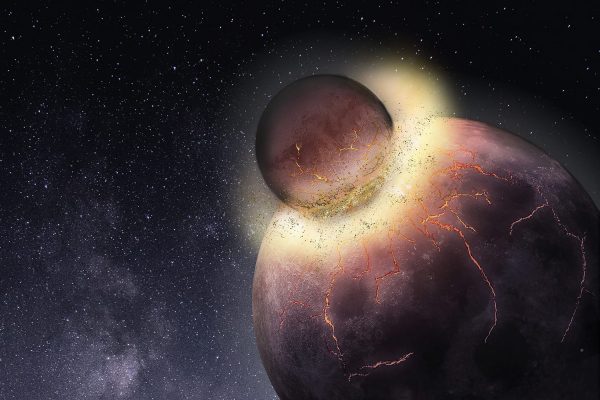
The ancient collision that formed the moon may also have brought with it all the ingredients needed for life, a new study finds.
Over 4.4 billion years ago, a Mars-size body smashed into a primitive Earth, launching our moon into permanent orbit around our planet.
But a new study finds that this event could have had a much larger impact than previously thought. The collision could also have imbued our planet with the carbon, nitrogen and sulfur needed for life to form, scientists reported today (Jan. 23) in the journal Science Advances.
Back then, Earth was a little like Mars is today. It had a core and it had a mantle, but its noncore portion was very poor in volatile elements such as nitrogen, carbon and sulfur.
Elements in the noncore parts of our planet, called the “bulk silicate Earth,” can intermingle with each other, but they never interact with the elements of the core. Though some volatiles existed in the core, they couldn’t make their way to the planet’s outer layers. And then a collision happened.


